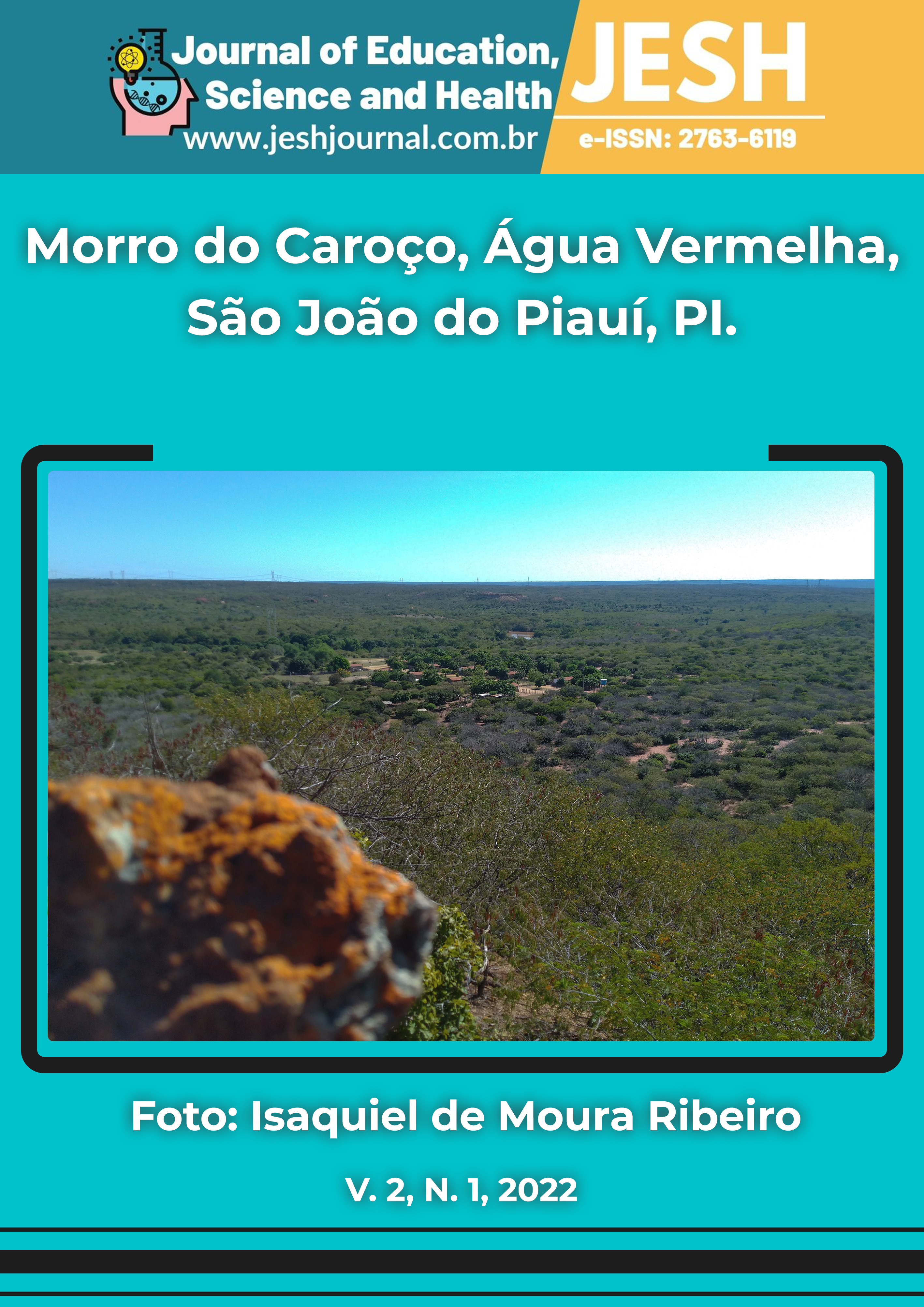BEES ASSOCIATED WITH COFFEE IN DIFFERENT FARMING SYSTEMS IN THE BAHIA SEMI-ARID, BRAZIL
BEES ASSOCIATED WITH COFFEE IN DIFFERENT FARMING SYSTEMS IN THE BAHIA SEMI-ARID, BRAZIL
DOI:
10.52832/jesh.v2i1.58Keywords:
Agrosystem, Apoidea, Hymenoptera, Moericke, Floral visitorsAbstract
In this work, we sought to verify if the diversity of bees is altered by the different types of coffee agrosystems and if it is maintained at all development stages (vegetative and reproductive), observing four cultivation systems of the Catuaí variety, two arborized and with both conventional and without pesticides systems (SAT), in association with grevillea (Grevillea robusta), and two at full-sun (SAT and conventional) for two evaluation periods (vegetative and reproductive). A fortnight monitoring was carried out, with ten traps of the Moericke type, which remained in the field for 48 hours, and an entomological net. In the vegetative phase, 193 bee specimens were collected, distributed in 21 species, 18 genera, seven tribes and four families, with the most abundant genera being Apis (37.8%), Melitomella (16.1%), Exomalopsis (10.9%) and Oxaea (10.9%). For the reproductive period, 351 specimens from nine species of the Apidae and Halictidae families were collected. It was observed that the factors that interfered in the bee community composition may be related to the use of pesticides and the absence of weeds between the rows during the vegetative period. During the coffee reproductive phase, the bee diversity decreased due to the intense presence of social bees. Trigona spinipes (36,8%), Apis mellifera (33%) and Schwarziana quadripunctata (19,9%) were the most frequent species in the coffee flowers for all studied agrosystems.
Downloads
Metrics
References
Armas-Quiñonez, G., Ayala-Barajas, R., Avendaño-Mendoza, C., Lindig-Cisneros, R., del-Val, E. (2020). Bee diversity in secondary forests and coffee plantations in a transition between foothills and highlands in the Guatemalan Pacific Coast. PeerJ 8: e9257 DOI: https://doi.org/10.7717/peerj.9257
Fávero, A.C., Moraes, J. R., Perdigao, J. C., Abreu, J. A. S., Couto, R. H. N. (2000). Polinização entomófila em duas variedades de café (Coffea arabica var. Mundo Novo e var. Catuaí Vermelho). Anais do IV Encontro sobre Abelhas, Ribeirão Preto - SP.
Free, J. B. (1993). Insect pollination of crops. Academic Press. London.
Geeraert, L., Aerts, R., Berecha, G., Daba, G., De Fruyt, N., D’hollander, J., Helsen, K., Stynen, H. & Honnay, O. (2020). Effects of landscape composition on bee communities and coffee pollination in Coffea arabica production forests in southwestern Ethiopia. Agric. Ecosyst. Environ., 288, 106706–106717. DOI: https://doi.org/10.1016/j.agee.2019.106706
Goulson, D., Nicholls, E., Botías, C. & Rotheray, E. L. (2015). Bee declines driven by combined stress from parasites, pesticides, and lack of flowers. Science. 347: 6229. DOI: https://doi.org/10.1126/science.1255957
Hammer, O., Harper, D. A. T. & Ryan, P. D. (2001). PAST: Paleontological statistics software package for education and data analysis. [Paleontología Electrónica] Versión 10.0.0. Disponível em:<http://palaeo-electronica.org/2001_1/past/issue1_01.htm>. Acesso em: 10 de janeiro. 2016.
Hipólito, J., Boscolo, D. & Viana, B. (2018). Landscape and crop management strategies to conserve pollination services and increase yields in tropical coffee farms. Agric. Ecosyst. Environ., 256: 218–225. https://doi.org/ 10.1016/j.agee.2017.09.038 DOI: https://doi.org/10.1016/j.agee.2017.09.038
Imperatriz-Fonseca, V. L., Alves, D. A., Canhos, A. L. & Saraiva, A. M. (2012). Polinizadores e Polinização – Um Tema GloBAl. In: Imperatriz-Fonseca, V. L. Polinizadores no Brasil. Editora da Universidade de São Paulo. São Paulo. Brasil. 488: 25-35.
Khalifa, S. A. M., Elshafiey, E. H., Shetaia, A. A., Abd El-Wahed, A. A., Algethami A. F., Musharraf, S. G., AlAjmi M. F., Zhao, C., Masry S. H. D., Abdel-Daim, M. M., Halabi, M. F., Kai, G., Naggar, Y. A., Bishr, M., Diab, M. A. M. & El-Seedi H. R. (2021). Overview of bee pollination and its economic value for crop production, Insects, 12:688. DOI: https://doi.org/10.3390/insects12080688
Klein, A. M., Steffan-Dewenter, I. & Tscharntke, T. (2003). Fruit set of highland coffee increases with the diversity of pollinating bees. Proceedings of the Royal Society of London B, Biological Sciences. 270, 955-961. DOI: https://doi.org/10.1098/rspb.2002.2306
Klein, A. M., Vaissière, B. E., Cane, J. H., Steffan-Dewenter, I., Cunningham, S. A., Kremen, C. & Tscharntke, T. (2007). Importance of pollinators in changing landscapes for world crops. Proceedings of the Royal Society of London B, Biological Sciences. 274: 303–313. http://doi.org/10.1098/rspb.2006.3721 DOI: https://doi.org/10.1098/rspb.2006.3721
Kottek, M., Markus Kottek, Jürgen Grieser, Christoph Beck, Bruno Rudolf & Franz Rubel (2006). World map of the Köppen-Geiger climate classification updated. Meteorologische Zeitschrift, 15: 259-263. DOI: https://doi.org/10.1127/0941-2948/2006/0130
Krebs, C. J. (1986). Ecologia - Análisis experimental da la distribución y abundancia. 3. ed. Madri: Ediciones Pirámide.
Kremen, C., Neal M., Williams, Robert L., Bugg, John P., Fay & Robin W. Thorp (2004). The area requirements on an ecosystem service: crop pollination by native bee communities in California. Ecology Letters, 7, 1109–1119. Doi: 10.1111 / j.1461-0248.2004.00662. DOI: https://doi.org/10.1111/j.1461-0248.2004.00662.x
Malerbo-Souza, D. T. & Halak, A. L. (2012). Agentes polinizadores e produção de grãos em cultura de café arábica cv.“Catuaí Vermelho”. Científica, 40(1),01-11.
Morandin, L. A. & Winston, M. L. (2006). Pollinators provide economic incentive to preserve natural land in agroecosystems. Agriculture, Ecosystems & Environment. 116:289–292. DOI: https://doi.org/10.1016/j.agee.2006.02.012
Nogueira-Couto, R. H. & Couto, L. A. (2006). Apicultura: Manejo e produtos. Funep. 3. ed. Jaboticabal, São Paulo.
Reichle, C., Aguilar, I., Ayasse, M., Twele, R., Francke, W., Jarau, S., (2013). Learnt information in species-specific ‘trail pheromone’ communication in stingless bees. Anim. Behav. 85, 225–232. https://doi.org/10.1016/j.anbehav.2012.10.029 DOI: https://doi.org/10.1016/j.anbehav.2012.10.029
Ricci, M dos S. F., Araújo, M. do C. F. & Franch, C. M. de C. (2002). Cultivo orgânico do café: recomendações técnicas. EMBRAPA Informação Tecnológica. Brasília, Brasil. 101p.
Ricketts, T. H., Regetz, J., Steffan-Dewenter, I., Cunningham, S. A., Kremen, C., Bogdanski, A., Gemmill-Herren, B., Greenleaf, S. S., Klein, A. M., Mayfield, M. M., Morandin, L. A., Ochieng, A., Potts, S. G., Viana, B. F. (2008). Landscape effects on crop pollination services: are there general patterns? Ecology Letters, 11(5), 499-515. Doi: 10.1111/ j.1461-0248.2008.01157.x DOI: https://doi.org/10.1111/j.1461-0248.2008.01157.x
Santos, H. G. (2013). Sistema Brasileiro de Classificação de Solos. Revisada e Ampliada 3 ed. Embrapa. Brasília, Brasil.
Sakagami, S. F., Laroca, S. & Moure, J. S. (1967). Wild bees biocenotics in São José dos Pinhais (Pr), South Brazil - preliminary report. Journal of the Faculty of Science Hokkaido University (Ser. 6, Zoology).19:253-291.
Silva, M. F., Nascimento, L. O. L. S. & Pérez-Maluf, R. (2020). Abelhas polinizadoras e produção de frutos e sementes em café convencional. Braz. J. Anim. Environ. Res., 3(4), 4227-4237. DOI: https://doi.org/10.34188/bjaerv3n4-118
Silveira, F. A., Melo, G. A. R. & Almeida, E. A. B. (2002). Abelhas brasileiras: Sistemática e Identificação. Min. Meio Ambiente/Fund. Araraucária. Belo Horizonte, Brasil.
Silveira Neto, S., Nakano, O., Barbin, D. & Nova, N. A. V. (1976). Manual de ecologia dos insetos. São Paulo: Agronômica Ceres.
Souza, D. L. & Evangelista-Rodrigues, A. (2007). As abelhas como agentes polinizadores (The bees agents pollinizer’s). REDVET. Revista eletrônico de Veterinária, 1695:7504.
Steffan-Dewenter, I., Klein, A. M., Gaebele, V., Alfert, T. & Tscharntke, T. (2006). Bee diversity and plant–pollinator interactions in fragmented landscapes. In: Waser, N. M. & Ollerton, J. (Eds.). Specialization and generalization in plant–pollinator interactions (pp. 387-410). Editora Chicago University Press. Chicago. United States of America.
Witter, S. Nunes-Silva, P., Blochtein, B., Lisboa, B. B. Imperatriz-Fonseca, V. L. (2014). As abelhas e a agricultura. Porto Alegre: EdiPUCRS.
Downloads
Published
How to Cite
Issue
Section
License
Copyright (c) 2022 Journal of Education, Science and Health – JESH

This work is licensed under a Creative Commons Attribution-NonCommercial 4.0 International License.

































